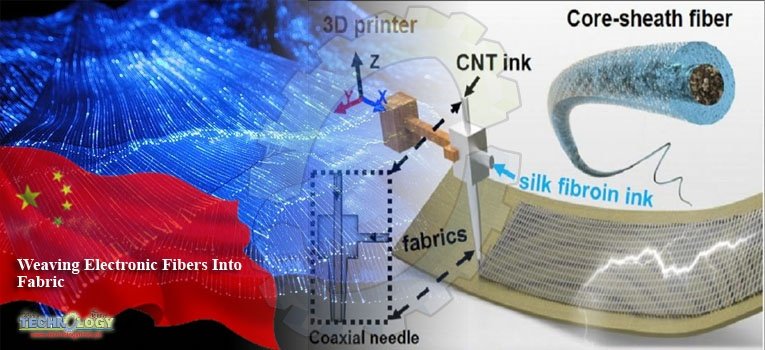Researchers in China have developed a 3D printer equipped with a coaxial nozzle that threads energy-harvesting fibers onto fabrics. In a study published in the journal Matter, scientists in China have 3D printed electronic fibers into fabrics, expanding the possibilities for wearable electronics.

The potential for wearable electronics goes far beyond smart watches, but the current options for battery packs and circuit boards do not make for the most comfortable e-socks.
Researchers have explored manually sewing electrical components, such as LED fibers, into fabrics, but these multi-step processes are labor intensive and time consuming. Seeking to overcome these barriers, scientists led by Professor Zhang Yingying at Tsinghua University, China, used a 3D printer to incorporate fibers made of conductive inks into fabrics.
The two inks—a carbon nanontube solution to build the conductive core of the fibers and silkworm silk for the insulating sheath—were dispensed into injection syringes and connected to the coaxial nozzle of the 3D printer. “We proposed a coaxial nozzle approach because single-axial nozzles allow only one ink to be printed at a time, thus greatly restricting the compositional diversity and the function designing of printed architectures,” Zhang explained.
The advantage of using a 3D printer is that it can build versatile features into fabrics in a single step. The approach is also cheap and easy to scale up as the nozzle is compatible with existing 3D printers, and the parts can be swapped.
However, the resolution of what can be printed is limited to the mechanical movement accuracy of the 3D printer and the size of the nozzles. Nonetheless, the researchers were able to demonstrate that their printed fibers could harvest and store electricity.
“We hope this work will inspire others to build other types of 3D printer nozzles that can generate designs with rich compositional and structural diversity and even to integrate multiple coaxial nozzles that can produce multifunctional e-textiles in one step,” said Zhang.
“Our long-term goal is to design flexible, wearable hybrid materials and electronics with unprecedented properties and, at the same time, develop new techniques for the practical production of smart wearable systems with integrated functions, such as sensing, actuating, communicating and so on.”